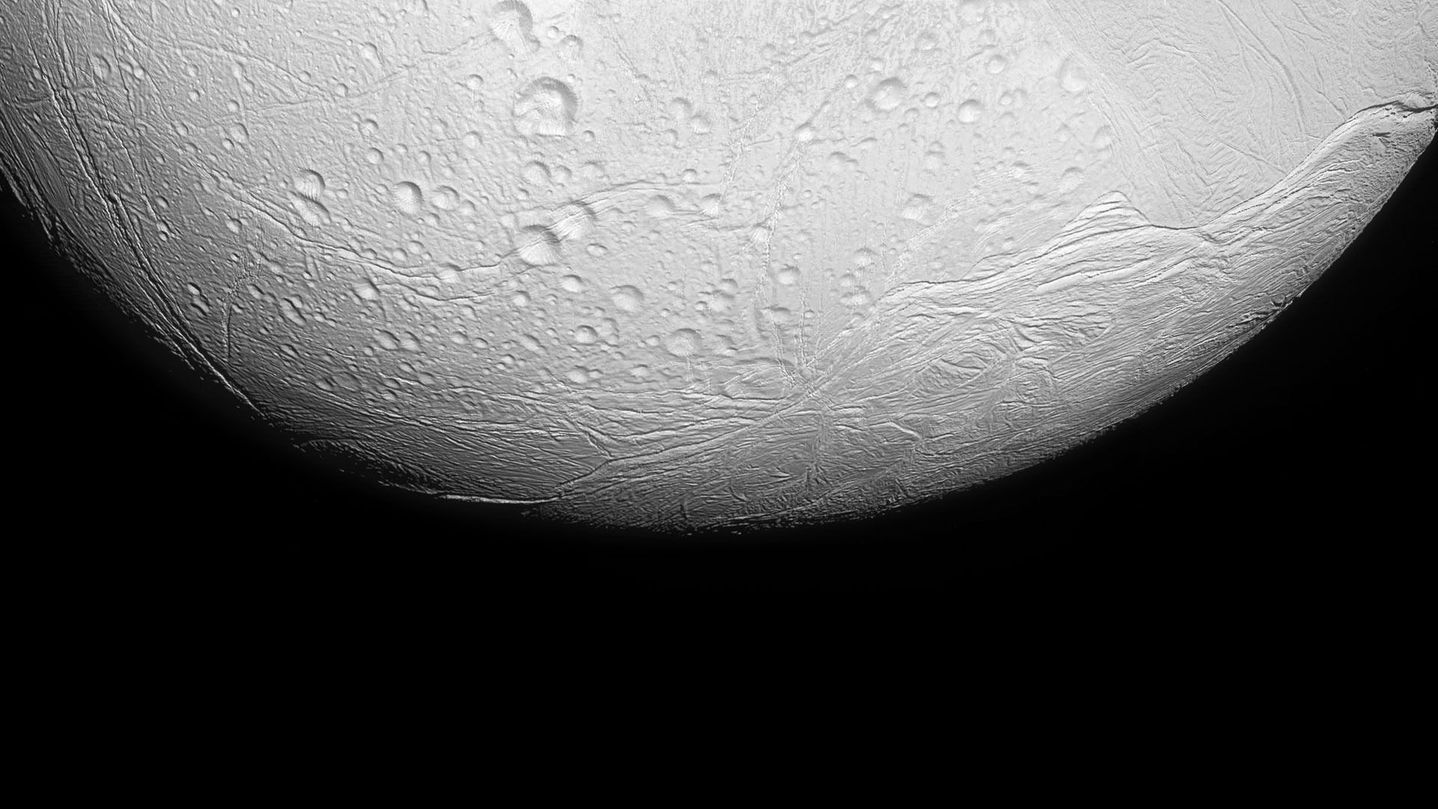Cassini Finds Evidence of a Hidden Ocean on Saturn’s Moon

A mosaic made from raw images from Cassini, taken on December 21, 2010, shows a detailed look at the south pole of Enceladus. Image: NASA / JPL / SSI / J. Major Finding liquid water on a celestial body within the solar system is exciting. The only thing that is probably more exciting is finding an ocean full of it. Today such news comes via Cassini, which has made measurements that show that Saturn’s moon Enceladus has a hidden ocean beneath its icy surface. While orbiting Saturn in 2005, Cassini found jets of salty water spewing from the south polar region of Enceladus. According to Luciano Iess of Sapienza University of Rome, lead author of the new study published in Science, “The discovery of the jets was unexpected.” Geysers require liquid water, and we wouldn’t expect Enceladus to have any. It is too far from the Sun to absorb much energy and too small (just 500km in diameter) to have trapped enough internal energy to keep its core molten. The answer to how the water got there might lie in the details of the moon’s internal structure. Water beneath an icy crust The data to understand Enceladus’s internal structure came from by measuring changes in Cassini’s speed as it flew close to the moon. When passing the denser parts of the moon, it sped up by a few extra thousandths of a meter per second. That minute change was tracked through recordings of the radio signals Cassini was sending to NASA’s Deep Space Network station. In making such tiny measurements, scientists had to filter out other factors that could influence Cassini’s speed. These include pressure on the spacecraft from sunlight, the nudge from heat radiating from its nuclear-powered electrical generator, and the drag of the particles it strikes as it passes through the south polar plumes. Iess and his colleagues have produced a model of the internal structure of Enceladus using the measurements. They conclude that there is a core that is roughly 200km in diameter; above that lies a 10km-thick layer of liquid water, which is followed by 40km of ice crust. The water layer may extend all the way to the north pole, but its thickest part lies at the south pole. This diagram illustrates the possible interior of Saturn’s moon Enceladus based on a gravity investigation by NASA’s Cassini spacecraft and NASA’s Deep Space Network, reported in April 2014. Image: NASA/JPL-Caltech It is possible that Saturn’s powerful gravity is responsible for the liquid water under Enceladus’s surface. Its pull could heat up the interior through a process called tidal kneading, which involves the slow compression and expansion of the core as the moon rotates through Saturn’s gravity well. After the initial discovery of the plumes, Cassini’s minders put a lot of effort into determining Enceladus’s internal structure, but it still took nearly ten years to do so. This is because the time the spacecraft spends around Saturn is very valuable, and there are lots of other things […]